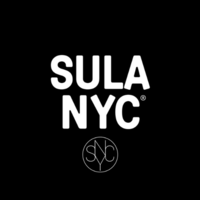
Recently, ITC publiced 'the State of Sustainable Markets', a report based on a partnership with the Research Institute of Organic Agriculture (FiBL, Switzerland) and the International Institute of Sustainable Development (IISD, Canada). This report outlines data on area, production volume and producers. Fourteen Voluntary Sustainability Standards and its impact are described. Voluntary standards are developed and maintained by organizations like IFOAM (the first, since 1972), FSC, Fairtrade, UTZ and Rainforest Alliance. The latter organizations merged, for more info: www.rainforest-alliance.org/article/rainforest-alliance-utz-merger.
We highly recommand reading this report, loaded with statistics and merging trends. Here are some infographics:
SULA NYC formulates with ingredients from two completely different geographical regions: the wetlands: Amazon basin and the drylands: Maghreb. We are USDA organic certfied and advocate organic farming and products. Reports like this are encouraging and educational; frankly we did not know Oceania has 13 times more organic land than Africa or Ethiopia ranks #2 on number of producers: 203,000! The fact that Switzerland spends most on organic products- 262 euro per capita - was not surprising - as for everyone who has shopped for groceries in Switzerland. It was the first country who mandated us to discard the alu lid of a container with youghurt. And a shout out to Switzerlands' SECO

State Secretariat for Economic Affairs - for their support to this publication. SECO is the federal government`s centre of excellence for all core issues relating to economic and labour market policy. They aim to contribute to sustained economic growth, high employment and fair working conditions by creating the necessary regulatory, economic and foreign policy framework. SECO also funded PAMPAT. “Project for Market Access of Products of Terroir” to improve the performance, market access and the socio-economic conditions of two value chains in Morocco – argan oil and cactus prickly pear . This project is being implemented by the United Nations Industrial Development Organization (UNIDO), in close cooperation with the Moroccan Ministry of Agriculture and Marine Fisheries and the Agency for Agricultural Development (ADA).
Figure 1 below illustrates the growth of some organic products. But where is Organic Argan Oil? of one of the Amazon oils? Easy to answer: not yet close to the volumes of vegetable oils to be statistial significant on the gloobal scale. The production volume of 9 main vegetable oils (palm, rapeseed, soybeen etc.) is 183 million ton per year. Production of Argan oil is 0,04825%. (source: SULA NYC). We predict Argan oil will be featured as one of the fast organic growers in % soon. After all: the tree does not need fertilizers, irrigation or pesticed protection. But just to visualize the impact of the argan production as percentage on the world scale: take a A4 paper, color it green. take a yellow fineliner and make the smallest dot in the green. That would be much more that the actual percentage....
The Argan Bio-reserve ( Unesco protected) is 830,000 ha. The PMV ( Plan Maroc Vert) plans to extend 200,000 ha, mostly by restoring the Argan Forest. In additon to the natural (wild) trees Cultivars are planted by the thousands annually.

In a recent 'Organic Agriculture development in Morocco', ISOFAR (International Society of Organic Agriculture Research, Germany) with contribution from INRA (Institut National de la Recherche Agronomique, Morocco) and AMABIO (Moroccan Association of Organic Production Chain Value) organic cultivated land area is estimated at a little over 8,000 ha, 0,08% of the Moroccan Utilized Agricultural Area (UAA). That is, minimal. But the areas of wild collection, organics land exceeds 9% of the national area. Isofar: well above the world average of 0,9%. The Argan forest hectares is about 4 times larger than the next organic crop: Medicinal and Aromatic Plants. The Argan tree (Argania Spinosa) in the wild does not need irrigation, fertilizer or pesticides treatments.


In perspective: 7 Certifiers in Morocco, 162 (wild) Growers and Handlers for Argan Oil in 2017. (source: SULA NYC)



